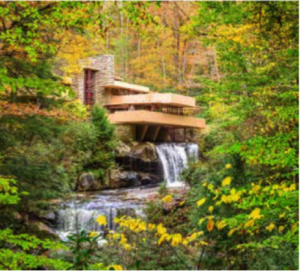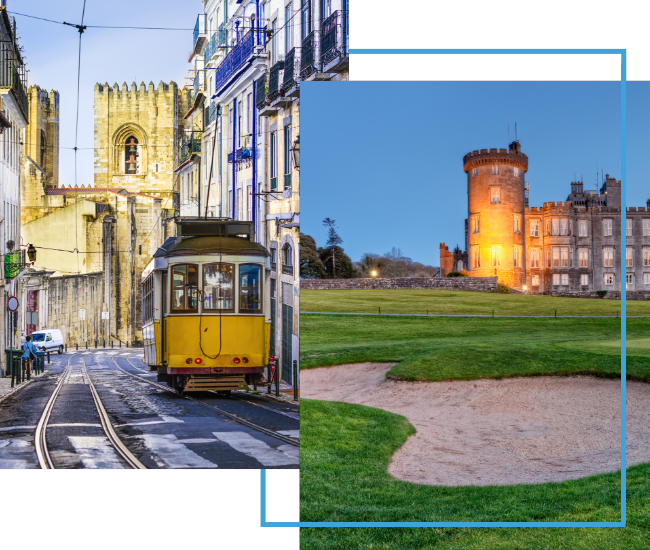PITTSBURGH WILL ALWAYS BE STEEL CITY, but future generations will also know it as a hub for robotics, artificial intelligence and similar technologies, thanks to a shift that began decades ago when the steel industry collapsed. Out of necessity, slowly but steadily, the economy became less reliant on blue-collar industries and more so on white-collar ones like finance, health care and technology.
“The transformation is something people have to see,” said Mark Thomas, president, Pittsburgh Regional Alliance. “Pittsburgh has retained its character and culture and is building on its phenomenal legacy. It may have missed the skyscraper era, but it’s fast-forwarded to what will impact the next century.”
According to the Pittsburgh Technology Council, those technologies that will impact the future fall into six categories: information technology, including hardware and software; life sciences, including medical devices and health services; advanced manufacturing; advanced materials, such as chemicals and plastics; energy technology, including the production of petroleum and hydroelectricity; and environmental technology, including waste management.
Robotics, AI and autonomous vehicles fall under the umbrellas of those six categories, but so do countless products, processes and services most people take for granted or aren’t even aware of. It’s no wonder technology is the fastest-growing industry in Pittsburgh and accounts for roughly 23 percent of its overall workforce.
“A lot of people think of tech being just hardware and software, but it is so much more,” said Jonathan Kersting, vice president of communication and media, Pittsburgh Technology Council.
Even nontechnology industries in Pittsburgh, such as finance and education, often support the industry. For example, PNC Financial Services, a Fortune 500 company headquartered here, specializes in financing technology equipment, and several of the area’s top universities, such as Carnegie Mellon University and the University of Pittsburgh, offer renowned technology and engineering programs.
In fact, without CMU, the technology industry in Pittsburgh might not be the economic force it is today. The university was one of the first in the nation to offer a computer science program; the first, in 1979, to offer a Ph.D. in robotics; and the first to offer an undergrad program in AI. Additionally, CMU attracted robotics pioneers like William “Red” Whittaker to Pittsburgh and, with them, investment capital.
Startups have since flourished. Some, like Argo AI, are backed by major corporations. (In Argo AI’s case, Ford Motor Co. committed $1 billion in 2017 to help fund its work on autonomous vehicle technology.) Other startups have been acquired outright by companies like Yelp, Delphi Automotive and IBM, all eager to invest in future technologies. Either way, many of these companies reside near the Strip District in what’s come to be known as Robotics Row.
Not to be left out, some tech giants moved into the market. Amazon recently added 125 new jobs to its Pittsburgh Tech Hub, and Facebook invested $15 million in a new AI lab here. Similarly, Uber has a division on Robotics Row, and Google, Bossa Nova Robotics and Microsoft have offices in the city. The influx demonstrates Pittsburgh’s influence in robotics and AI.
“At the end of the day, Pittsburgh is in the top three, if not at the top, for robotics in the world,” Kersting said.
Yet despite local universities churning out graduates with robotics, AI and advanced technology degrees, Pittsburgh’s tech businesses struggle to find people capable of the specialized, cutting edge the city is known for. Locally headquartered Duolingo even recently purchased a billboard along California’s U.S. Route 101 imploring San Francisco tech workers to consider relocating. It read, “Own a home. Work in tech. Move to Pittsburgh.”
Both the Pittsburgh Technology Council and Pittsburgh Regional Alliance are trying to get the word out, especially to millennials, that Pittsburgh has opportunities they won’t find anywhere else. Not only are there jobs, Thomas pointed out, but Pittsburgh has nine county parks spanning 12,000 acres; miles of riverfront trails; four Carnegie museums; and a sophisticated food scene. It’s also a leader in sustainability and green initiatives, boasting 378 LEED-certified buildings.
However, to reach its potential, the city needs more than just tech gurus; it needs access to the world. Pittsburgh International Airport has taken the first step and is in the midst of a $1.1 billion new terminal project that will allow it to handle more air traffic more efficiently. But the Pittsburgh Airport Innovation Campus, scheduled to complete its first phase in 2020, promises an even bigger impact as a foreign trade zone.
The designation allows foreign companies relief and exemptions from certain duties and tariffs, making it easier and more affordable for them to do business in Pittsburgh. When complete next decade, the 195-acre campus will feature office space, research and development laboratories and industrial manufacturing space.
Progress does hinge on acquiring the necessary talent, though. Tech companies can’t grow if they can’t hire enough of the right people, Kersting said. He hopes they’ll find those people.
“I’d like to see the tech companies here grow and open offices around the world,” he said.
SCENIC DRIVES
You don’t have to drive far to leave Pittsburgh’s technology, robotics and artificial intelligence behind. Head south on I-79 to U.S. Route 40, the nation’s first federally funded interstate highway. From there, drive east past Fort Necessity and two historic toll houses, or go west, crossing the Ohio River and continuing to Columbus.
The Ohio River Scenic Byway offers another option. Begin in East Liverpool, Ohio, and continue on Highway 7, winding along the river and through forests. If you have several days, you can drive all the way to Fort Defiance State Park in Illinois. Otherwise, turn around halfway through your day.

Frank Lloyd Wright’s Fallingwater
PHOTO: © SEAN PAVONE – DREAMSTIME.COM
Fans of famed architect Frank Lloyd Wright won’t want to miss the Laurel Highland Scenic Byway. Take State Route 711 south from Seward, stopping at Fort Ligonier, to Normalville. Then continue on State Route 381 to Wright’s masterpiece, Fallingwater. Tours of the home, now a UNESCO World Heritage site, operate every day except Wednesday, March through the end of December. You can end your drive there or continue seven miles south to another Wright home, Kentuck Knob. Wright at Polymath Park, the site of two more Wright-designed homes, is also in the area. Book tours online before you head out for the day.
Read This Next
All in the Family
January 2020
Jan 15, 2020
Introducing
FX Excursions
FX Excursions offers the chance for once-in-a-lifetime experiences in destinations around the world.
#globility
Insta FeedDaily
Apr 18, 2025Grand Hyatt Atlanta Buckhead Completes Renovation
Grand Hyatt Atlanta Buckhead unveils the completion of its multiphased renovation. With help from leading design firm DLR Group and architectural experts at designONE studio, the renovation features thoughtfully curated upgrades such as improved accommodations and new dining, socializing and relaxation spaces.
Sponsored Content
Royal Air Maroc Introduces Groundbreaking Safety Video: A Captivating Invitation to Discover Moroccan Heritage
Royal Air Maroc continues to elevate the passenger experience with the launch of its new in-flight safety video — a cinematic journey that seamlessly blends essential safety instructions with a celebration of Moroccan cultural heritage.
April 2025
Apr 18, 2025Wellness Comes Naturally in Greenville, South Carolina
Strolling through downtown Greenville, South Carolina, it’s easy to see why the city ranks high among the best places to live in the United States: Shops, restaurants and coffee bars line the streets; there are also performance venues, hotels and outdoor plazas. But what really sets this upstate city of just more than 78,000 residents apart are the easily accessible parks and walking trails encouraging both residents and visitors to explore the city by foot or cycle (both handcycles and adaptive bikes are available to rent). Even better, as Greenville continues to grow, city planners and major employers work together to expand these opportunities. When Greenville’s Swamp Rabbit Trail, for instance, opened in 2009, the paved, multiuse pathway ran about 9 miles from the heart of Greenville to the town of Traveler’s Rest.
Daily
Apr 18, 2025California’s Pebble Beach Company to Renovate The Links at Spanish Bay
California’s Pebble Beach Company unveiled the timeline for its highly anticipated renovation of The Links at Spanish Bay. The golf course will close March 18, 2026, and reopen in spring 2027, a few months before the U.S. Open will be played at Pebble Beach Golf Links for the seventh time.
Sponsored Content
Royal Air Maroc Marks Five Years with oneworld: Strengthening Connectivity Between USA and Africa and Expanding Global Reach
Royal Air Maroc proudly enters its fifth year as a member of the prestigious oneworld alliance. Since joining in April 2020, RAM has demonstrated resilience during the COVID-19 pandemic, emerging as a dynamic airline that enhanced its digital services and expanded its network. The airline plans to grow its fleet to 200 aircraft by 2037, reinforcing its global presence.
Daily
Apr 18, 2025Azamara Cruises Announces Shore Excursions for Maiden Voyage to Greenland
Azamara Cruises has unveiled its new shore programming for its Greenland sailings, which start this July. The cruise line is known for its Destination Immersion experiences and Extended Destination Days; all the immersive shore excursions for Greenland sailings have been created in collaboration with local communities to showcase Greenland’s natural beauty. Due to Azamara’s commitment to locally driven experiences, guests will engage with the destination’s unique culture while supporting the local people.
Exclusive St. Barts Hotel Offers for 2025
Daily
Apr 17, 2025eFlyer Reviews
Apr 16, 2025Grand Hotel Des Bains Kempinski St. Moritz Review
Switzerland’s most storied ski town (the one, in fact, credited with pioneering the very concept of Alpine tourism), St. Moritz legendarily attracts the rich, the famous, celebutantes and the wannabes. Yet, there’s something compellingly earthy about the place, a town on a lake rich with natural environs, where winter sports and summer activities draw athletes and mountain lovers aplenty. As at the mountain restaurants (where some arrive by chairlift rather than muscle movement, and all types of diners and imbibers convene), Grand Hotel des Bains Kempinski St. Moritz straddles the old and new, the lavish and the understated. The hotel, one of St. Moritz’s oldest, opened as a spa haven in 1864, set atop a healing mineral spring.
Sponsored Content
Find Your Perfect Escape with Paradisus by Meliá — More Than Just All-Inclusive
Luxury travel today is about more than just beautiful accommodations — it’s about experiencing the destination. Paradisus by Meliá takes traditional all-inclusive resorts to the next level by offering indulgence with immersion, experiences and authenticity. Each resort is shaped by its location, local flavors and curated Destination Inclusive® experiences that bring you closer to the heart of the destination.
eFlyer News
Apr 16, 2025Aranui Announces Expansion with Second Ship
Aranui Cruises, the original cruise company in French Polynesia, just announced a second luxury ship set to sail the South Pacific in 2027. The new ship, Aranoa, expands the cruise line and will journey across the Austral Islands.
ShareThis